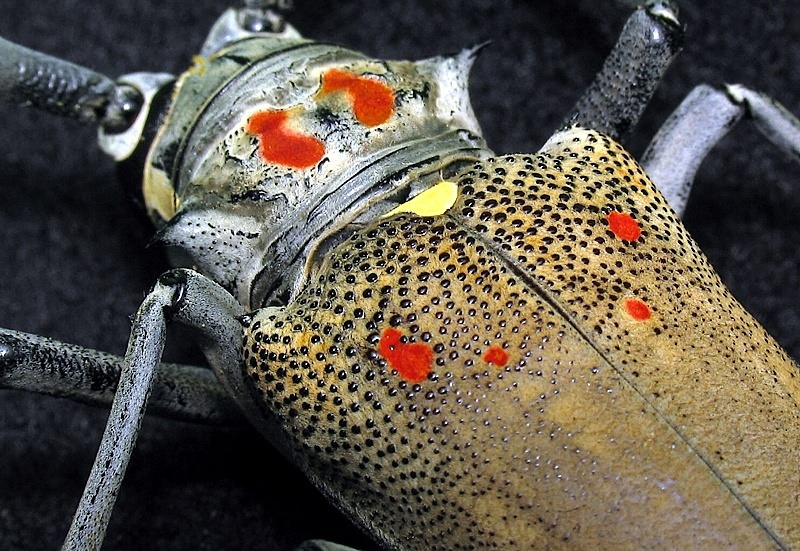|
|
|
Record originally contributed by FAO |
|
|
ARC - Agricultural Research Council
Pretoria
South Africa |

|
|
Batocera rufomaculata
|
|
Introduction |
Catherine Githure |
|
|
Classification |
Coleoptera : Cerambicidae |
Topic Editors
Data Stewards
Referees |
|
|
Synonyms |
Cerambyx rufomaculata De Geer |
|
Common names |
Bockkäfer, Feigenbockkäfer, longhorn beetle, mango stem-borer, mango tree borer, mangotree borer, red-spotted longhorn beetle, tropical fig borer, Tropischer Ficus-Bockkäfer (
full list
) |
|
|
|
|
|
|
|
Signs & symptoms |
Catherine Githure |
|
|
|
|
Morphology |
Catherine Githure |
|
|
|
|
Ecology |
Catherine Githure |
|
|
|
|
Dispersal/vectors |
Catherine Githure |
|
|
|
|
Management |
Catherine Githure |
|
|
|
|
Host notes |
Catherine Githure |
2004-09-23 |
B. rufomaculata
is a polyphagous species which attacks both living and dead trees. While it tends to attack living trees which are stressed, it will also sometimes attack apparently healthy trees. The host range differs throughout the species' range, but mango and fig are the two most commonly attacked hosts.
Wild
Ficus spp.
were attacked and killed in the Caribbean. In Israel, where
B. rufomaculata
was introduced in the late 1940s (Avidov and Harpaz, 1969), figs are most heavily attacked as are mango and avocado. Vinson (1962) listed mango as the main host in Mauritius, followed by
Spondias cytherea
(
S. dulcis
),
{{Artocarpus integrifolius}e}
(
A. integer
) and
{{Ceiba casearia}e}
.
Mango and figs are the main hosts throughout India and South-East Asia, the main range of the species; however, many other hosts are known including rubber and
Dyera costulata
. Duffy (1968) listed about 50 known hosts. The species has also been recorded as a pest of cashew timber (
Anacardium spp.
) in Kerala, India (Gnanaharan et al., 1985) and mulberry (
Morus spp.
) in India (Butani, 1978; Sharma and Tara, 1985).
Primary hosts
:
Artocarpus heterophyllus
(jackfruit),
Anacardium occidentale
(cashew nut),
Ceiba pentandra
(copal),
Dyera costulata
(hill jelutong),
Ficus carica
(common fig),
Hevea brasiliensis
(rubber),
Mangifera indica
(mango),
Morus spp.
(mulberrytree),
Spondias spp.
(purple mombin).
Secondary hosts
:
Persea americana
(avocado).
Wild hosts
:
Ficus spp.
.
Affected Plant Stages
: Post-harvest, and vegetative growing stage.
Affected Plant Parts
: Stems, roots, and growing points. |
|
Distribution |
Catherine Githure |
|
|
|
|
Bibliography |
Catherine Githure |
|
|
|
|
